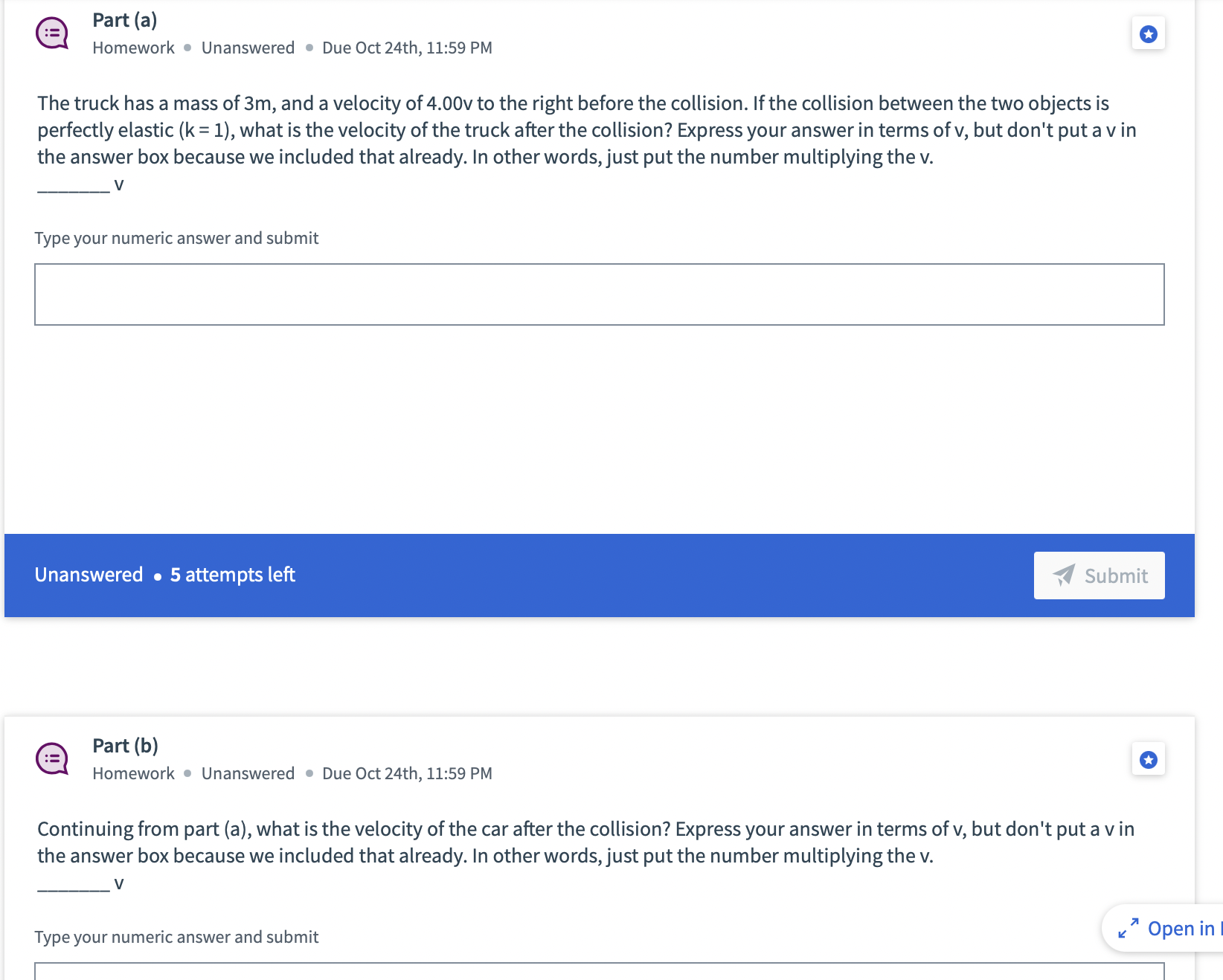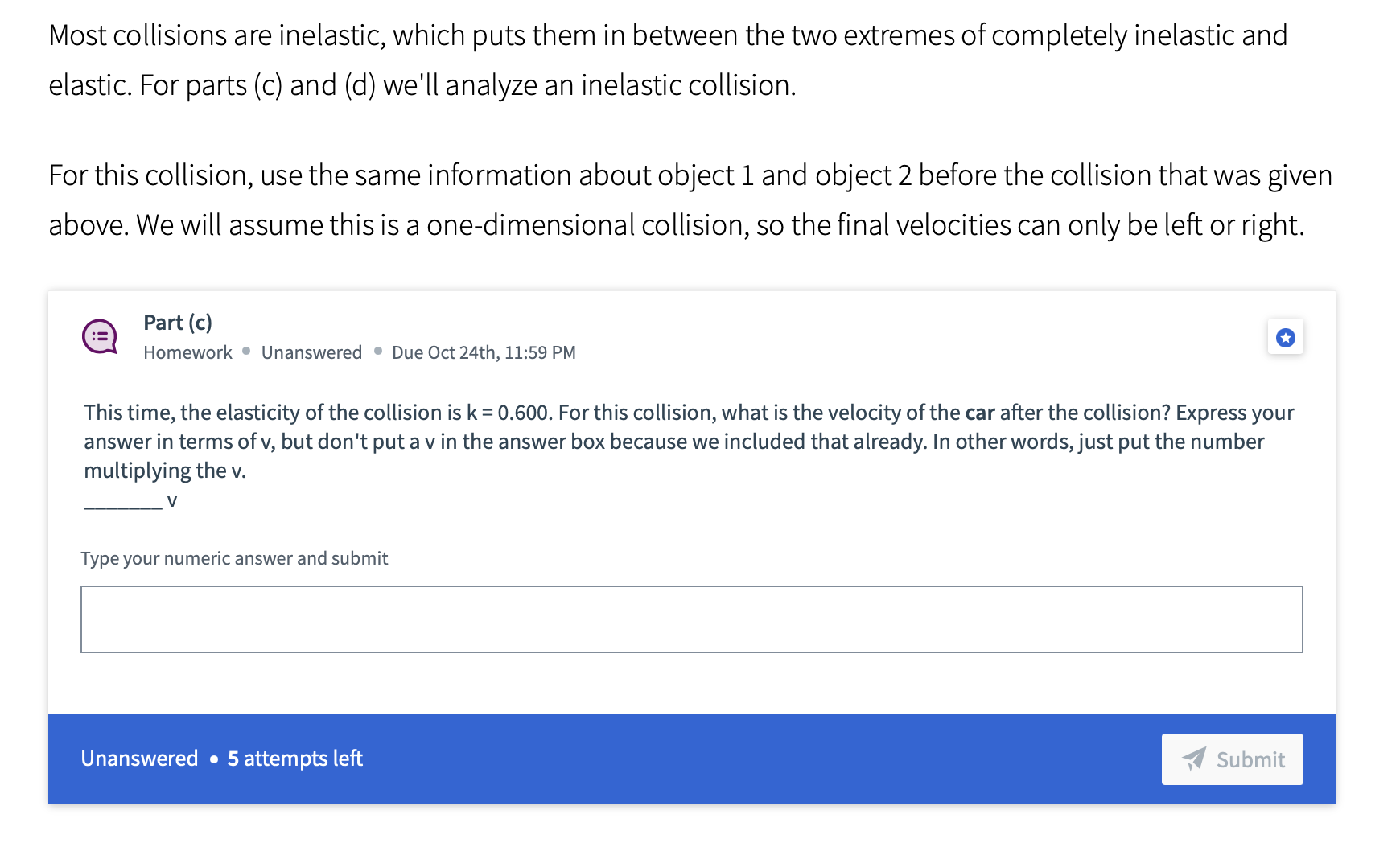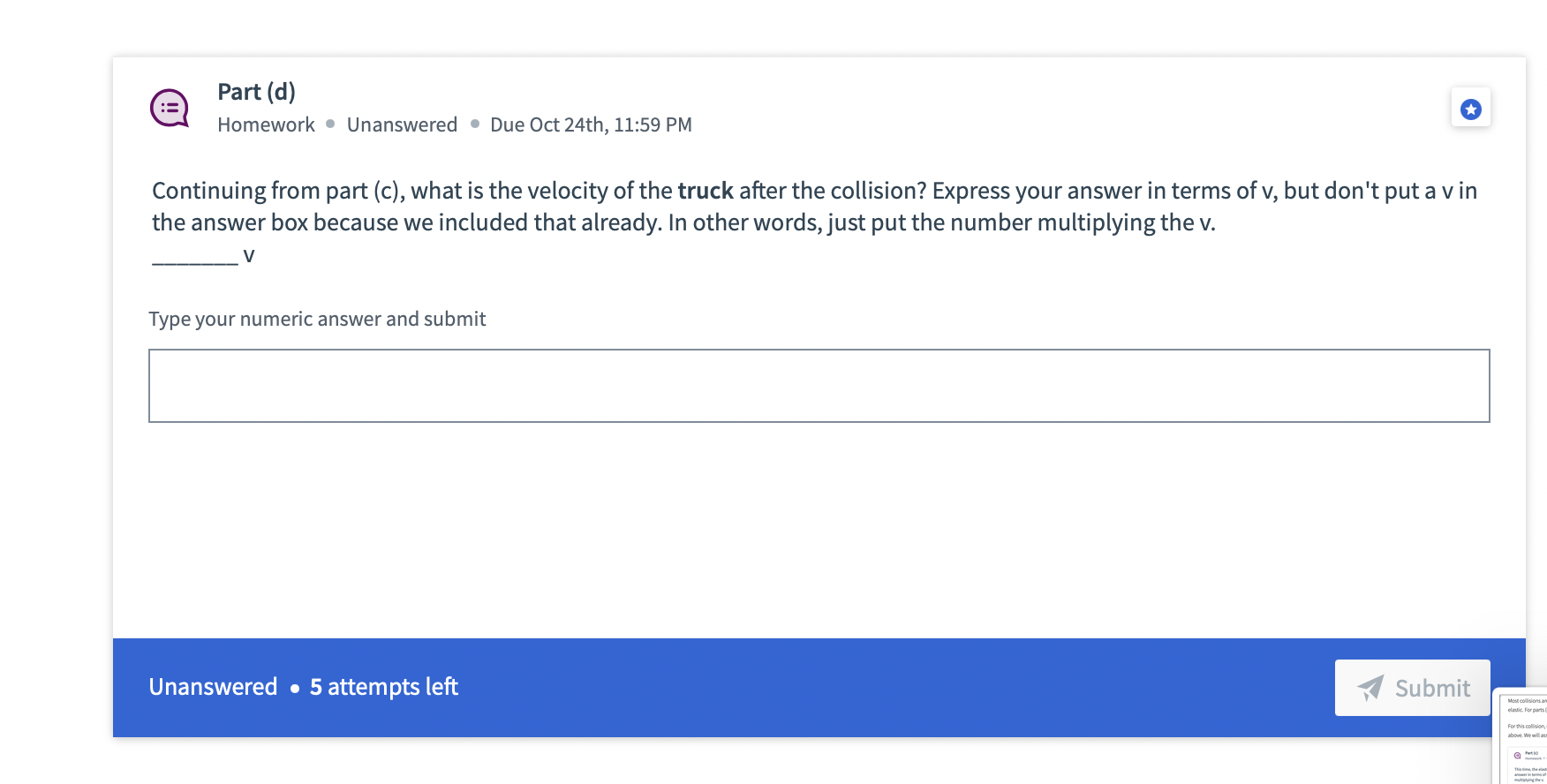Answered step by step
Verified Expert Solution
Question
1 Approved Answer
Collisions and elasticity In this problem, we'll analyze a one-dimensional collision between a car and a truck. You may find it helpful to use




Collisions and elasticity In this problem, we'll analyze a one-dimensional collision between a car and a truck. You may find it helpful to use the elasticity parameter k, which is given by: = V1f-V2f v2i-Vli For instance, v is the velocity of object 1 after the collision, while v2i is the velocity of object 2 before the collision. Take right to be positive in this problem. If you find a velocity is to the left, enter it with a minus sign. In each case below, object 1 has a mass m, and it has a velocity of 5.00v to the right before the collision. Object 1 is a car, and it hits a slow-moving truck (object 2) that is initially traveling in the same direction as the car. For parts (a) and (b) we'll analyze an elastic collision, in which k = 1. This is a bit challenging to solve, because there are two unknowns to solve for. The two unknowns are the velocities of the two vehicles after the collision. We will assume this is a one-dimensional collision, so the final velocities can only be left or right. Part (a) Homework Unanswered Due Oct 24th, 11:59 PM The truck has a mass of 3m, and a velocity of 4.00v to the right before the collision. If the collision between the two objects is perfectly elastic (k = 1), what is the velocity of the truck after the collision? Express your answer in terms of v, but don't put a v in the answer box because we included that already. In other words, just put the number multiplying the v. V Type your numeric answer and submit Unanswered 5 attempts left Submit Part (b) Homework Unanswered Due Oct 24th, 11:59 PM Continuing from part (a), what is the velocity of the car after the collision? Express your answer in terms of v, but don't put a v in the answer box because we included that already. In other words, just put the number multiplying the v. V Type your numeric answer and submit Open in Most collisions are inelastic, which puts them in between the two extremes of completely inelastic and elastic. For parts (c) and (d) we'll analyze an inelastic collision. For this collision, use the same information about object 1 and object 2 before the collision that was given above. We will assume this is a one-dimensional collision, so the final velocities can only be left or right. Part (c) Homework Unanswered Due Oct 24th, 11:59 PM This time, the elasticity of the collision is k = 0.600. For this collision, what is the velocity of the car after the collision? Express your answer in terms of v, but don't put a v in the answer box because we included that already. In other words, just put the number multiplying the v. V Type your numeric answer and submit Unanswered 5 attempts left Submit Part (d) == Homework Unanswered Due Oct 24th, 11:59 PM Continuing from part (c), what is the velocity of the truck after the collision? Express your answer in terms of v, but don't put a v in the answer box because we included that already. In other words, just put the number multiplying the v. V Type your numeric answer and submit Unanswered 5 attempts left Submit elastic. For parts For this collision
Step by Step Solution
There are 3 Steps involved in it
Step: 1

Get Instant Access to Expert-Tailored Solutions
See step-by-step solutions with expert insights and AI powered tools for academic success
Step: 2

Step: 3

Ace Your Homework with AI
Get the answers you need in no time with our AI-driven, step-by-step assistance
Get Started


